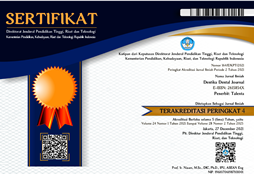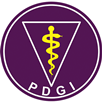RESIDUAL ALVEOLAR RIDGE RESORPTION IN COMPLETELY EDENTULOUS PATIENTS INFLUENCED BY PATHOPHYSIOLOGIC FACTORS
RESORPSI TINGGI TULANG ALVEOLAR PADA PASIEN TIDAK BERGIGI YANG DIPENGARUHI OLEH FAKTOR PATOFISIOLOGI
DOI:
https://doi.org/10.32734/dentika.v14i1.1971Keywords:
residual ridge resorption, Diabetes mellitus, menopause, Indian, Malay, ChineseAbstract
Residual ridge resorption and remodeling directly affect the function of removable prostheses which relies greatly on
the quantity and architecture of jaw bones. The purpose of this study was to assess the remaining bone height level in
relation to some pathophysiologic factors that may affect on the resorption process. The factors involved in this study
were Diabetes mellitus, periodontitis, menopause, and edentulousness time (more than 10 years). Maxillary and
mandibular bone height on 115 dental panoramic radiographs belonged to full edentulous patients were measured and
compared to 35 controls using MB Ruler software. The soft images were collected using the radiographic machines in
the faculty of dentistry. The measurements included maxillary middle anterior and lateral bone heights, middle
mandibular dimension, right and left mental bone heights. The results showed that women with completely edentulous
arches showed relatively higher rate of bone resorption than men, and control group. Indian patients also demonstrated
higher bone resorption rate, particularly on the mandible, followed by Chinese and Malay. In regard to different health
conditions, edentulousness time for more than 10 years showed the minimal bone height reduction that affected mainly
the mandible sides compared to other conditions and the control group. On the sides of maxilla, periodontitis exhibited
higher effect on the residual ridge resorption rather than other studied conditions. However, on the middle of maxilla,
menopause was associated with maximum bone resorption compared to the others. As conclusions, residual ridge
resorption in completely edentulous patients may be influenced by gender, race and patient’s health conditions.


















